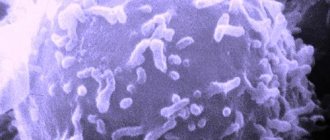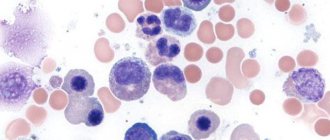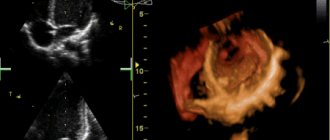Method for determining the indicator
In the laboratory, the study of the osmotic stability of erythrocytes is carried out by diluting blood in solutions of table salt (NaCl) of various concentrations. In comparison with the content of sodium and chlorine ions in the cytoplasm of erythrocytes, solutions are isolated:
- Isotonic. The salt concentration is approximately 0.9% - this is its norm in the blood. There are no changes in blood cells in it. Its other name is widely known – physiological solution (saline).
- Hypotonic. The concentration of ions in them is lower; due to osmotic pressure, water enters the red blood cells, and they swell to the point of hemolysis (destruction).
- Hypertensive. The salt content in them is higher - the cells give up water and shrink.
The method for assessing the osmotic resistance of erythrocytes is as follows:
- hypotonic solutions (since hemolysis is observed in them) of table salt of various concentrations (usually in the range from 0.22 to 0.7%) are poured into test tubes.
- add 0.02 milliliters of blood collected from a finger or from a vein (from there the results will be “purer”),
- the resulting solutions are kept on exposure for about an hour (to influence osmotic pressure on red blood cells),
- Afterwards, the contents of the tube are centrifuged.
The degree of hemolysis is determined by the hue (complete hemolysis is a bright red solution, its beginning is a solution with a pinkish tint); to obtain more accurate indicators, a photocolorimeter is used - an apparatus for optically measuring the concentration of a substance.
In laboratory diagnostics, the following indicators are used to determine the osmotic resistance of erythrocytes:
- Maximum resistance. It is equal to the concentration of NaCl solution at which complete hemolysis occurs within three hours. The norm for an adult is from 0.32 to 0.34%, the norm for infants is 0.24-0.32%, preschool age is 0.26-0.36%.
- Minimal resistance. Equal to the concentration of the same solution, at which only low-resistant cells undergo hemolysis within three hours (the color of the solution will be slightly pink). The norm for an adult is 0.46-0.48%, the norm for infants is 0.46-0.50%, preschool age is 0.46-0.48%.
In general, in older people the osmotic resistance of erythrocytes is lower, in children it is higher, but its range is wider.
To the osmotic resistance of erythrocytes
Let's return to red blood cells. What happens if you take blood in a test tube and add distilled water to it? Then the reverse process will occur. The environment inside the red blood cells is the same as in the body, 0.85% sodium chloride. Externally, in distilled water - 0%. Therefore, distilled water very quickly enters the red blood cells to equalize the concentration inside and outside.
The cells gradually swell, absorbing water, become spherical, and finally burst. So-called hemolysis occurs, and the blood becomes clear. There are no red blood cells there anymore. All their membranes are destroyed, and the hemoglobin pigment is dissolved in water. This type of blood is called “varnish” because it closely resembles reddish varnish.
If you place red blood cells in a hypertonic solution, then, on the contrary, it will suck all the water out of them, and they will eventually shrivel, like those same tomatoes. We all know that hypertonic dressings with a solution of strong table salt, when placed on purulent wounds, help cleanse them, since they take away all the wound discharge, and rinsing inflamed and loose tonsils with sore throats with salt water reduces swelling and pain. It is on such simple principles that this analysis is built.
Osmotic resistance of erythrocytes is that extremely low concentration of table salt in the blood at which blood cells are not yet destroyed. If this concentration is slightly reduced, then all the cells burst and hemolysis occurs. If the osmotic resistance of red blood cells is high, then hemolysis will occur when the salt concentration in the diagnostic solution is low enough: the cell membranes are healthy and stubbornly resist dilution.
If the resistance of red blood cells is poor, then a slight decrease in the concentration of table salt in the solution will cause their destruction. From this we can draw a simple but important conclusion. If the cell membrane of red blood cells is defective, synthesized “with defects,” then the resistance will be lower than that of healthy blood cells. This means that this simple analysis makes it possible, if not to determine, then to suspect hereditary blood diseases, for example, various types of hemolytic anemia, thalassemia, and other diseases.
Reasons for changes in indicators
An increase in osmotic resistance (maximum resistance less than 0.32%) occurs with the following pathologies:
- Massive blood loss (more than 5% of blood volume), since the number of young red blood cells in the blood increases as a compensatory mechanism, but in conditions of resource scarcity. As a result, a large number of cells with insufficiently strong membranes are formed.
- Atherosclerosis: cholesterol derivatives can be deposited on the red blood cell membrane, which leads to a change in its properties.
- Obstructive jaundice, its causes: blockage of the bile ducts due to the formation of gallstones, gallbladder disease and some liver diseases.
- Hereditary anemias associated with changes in the structure of hemoglobin (hemoglobinopathies): thalassemia, sickle cell anemia.
- Hereditary diseases that result in changes in the structure of the erythrocyte membrane (membranopathy).
- Condition after removal of the spleen.
- Polycythemia vera is an excessive increase in the number of blood cells due to a tumor in the hematopoietic organs.
- Cancer of the gastrointestinal tract.
A decrease in osmotic resistance (the minimum becomes higher than 0.48%) may be associated with:
- Lead poisoning and its derivatives.
- Hemolytic anemia, in which massive hemolysis of red blood cells occurs. The causes are various: autoimmune, hereditary diseases, hemolytic jaundice of newborns and others.
- A slight decrease is possible due to tuberculosis, heart failure, leukemia (blood cancer), cirrhosis of the liver.
Osmotic resistance of red blood cells
Osmotic resistance of red blood cells
The normal maximum osmotic resistance of erythrocytes is 0.34-0.32%, and the minimum is 0.48-0.46%.
Osmotic resistance of erythrocytes refers to their resistance to hypotonic sodium chloride solutions. Minimal resistance
red blood cells are determined by the maximum concentration of a hypotonic sodium chloride solution (in a series of solutions with gradually decreasing concentrations), at which hemolysis of the least stable red blood cells begins, which are in the solution for 3 hours; maximum - the minimum concentration of a hypotonic sodium chloride solution, which causes hemolysis of all red blood cells placed in this solution within 3 hours.
Maximum osmotic resistance below 0.32% is possible after large blood losses and splenectomy, with hemoglobinosis C, congestive jaundice, and also in some cases of polycythemia. An increase in the osmotic resistance of erythrocytes below 0.32% is characteristic of thalassemia and hemoglobinopathy.
Minimum osmotic resistance above 0.48% is observed in familial hemolytic anemia, hemolytic anemia of newborns and lead poisoning. Small changes can also be detected in toxicosis, bronchopneumonia, tuberculosis, malaria, leukemia, myelosclerosis, lymphogranulomatosis, and cirrhosis of the liver. Cases of expanding the boundaries of osmotic resistance (simultaneous decrease in minimum and increase in maximum resistance) are observed at the beginning of an acute hemolytic crisis and in the acute period of pernicious anemia.
Acid resistance of erythrocytes (Hem's test)
Normally, the Hem test is negative.
Acid resistance is determined based on the different acid resistance of red blood cells to HCl.
With Marchiafava anemia and some other hemolytic anemias, clear hemolysis is detected in an acidified test tube compared to the control.
Sickle erythrocytes in the blood
Normally, the red blood cell sickling test is negative.
The test is used to diagnose hemoglobinopathy. Hemoglobin S, when the partial pressure of oxygen decreases, crystallizes in the form of tactoids and gives the red blood cells a sickle shape. Among hemoglobinopathies, sickle cell anemia is the most common, so identifying sickle-shaped red blood cells makes it possible to identify this type of anemia.
Previous Next
www.urologi.ru
Reasons for deviation from the norm
The normal indicators may be violated due to certain diseases, both acute and chronic. Maximum resistance rates can be observed in the following cases:
- atherosclerosis;
- malignant neoplasms in the gastrointestinal tract;
- thalassemia;
- polycythemia, but only in some cases;
- splenectomy;
- hemoglobinopathy;
- hemoglobinosis;
- congestive jaundice;
- congenital blood diseases;
- systemic and autoimmune pathologies.
Minimal osmotic resistance may be a consequence of the following pathological processes:
- Iron-deficiency anemia;
- hemolytic anemia in newborns;
- heavy metal poisoning;
- extensive intoxication of the body;
- hereditary form of hemolytic anemia.
A slight deviation from the norm may be due to the following diseases:
- leukemia;
- cirrhosis of the liver;
- tuberculosis.
Predisposing factors for reducing the stability of CCP:
- the production of spherical red blood cells is a genetic deviation;
- completion of the life cycle of the CCP, which leads to a spherical shape;
- cardiovascular diseases.
Determining what exactly led to such a violation can only be done through diagnostic measures. The reason for starting the examination will be the corresponding clinical picture.
Preventing a decline in BER
Consultation with a geneticist for the prevention of hereditary pathologies
As a rule, the cause of decreased cell resistance is hereditary diseases. Patients faced with such a problem can turn to a geneticist to calculate the possibility of the same disease occurring in their children. In other cases, preventing a decrease in the density of the blood cell membrane comes down to maintaining a healthy lifestyle, the absence of bad habits, and creating the most favorable conditions for the process of hematopoiesis.
Signs of instability
Violation of the ORE is accompanied by the following symptoms :
- Loss of strength.
- Lack of appetite.
- Rapid general fatigue.
- Loss of body weight.
- Constant sleepiness.
- Pallor of mucous membranes.
- Significant increase in temperature.
When resistance drops, red blood cells are marked by the immune system (markers) and removed from the body by the spleen. In this case, the liver does not have time to neutralize the bilirubin released during cell destruction, resulting in hemolysis. When this process develops, a blood test shows a lack of red cells, and the body experiences a lack of oxygen.
How the analysis is carried out
The method for determining the osmotic resistance of erythrocytes involves the use of hypotonic solutions with a concentration of 0.22 to 0.7%. The same amount of blood is placed in them. This mixture is kept for about an hour at room temperature and then processed in a centrifuge. At the same time, observe the color of the liquid. At the beginning of the process of breakdown of red blood cells, the mixture becomes slightly pink, and when the blood cells are completely destroyed, it turns red.
Thus, when determining the osmotic resistance of erythrocytes, 2 indicators are obtained: minimum and maximum.
This test helps determine the cause of anemia. The patient's blood is taken from a vein. No special preparation or diet is required before the test.
How is the analysis carried out?
To test the osmotic resistance of erythrocytes, a hypotonic NaCl solution of different concentrations (from 0.7% to 0.22%) is placed in test tubes. The same amount of blood is added to each tube, usually 0.02 ml. The solution is kept at room temperature for an hour, after which it is centrifuged and the beginning of red blood cell destruction and complete hemolysis are determined by the color of the solution. If the solution turns slightly pink, this indicates the beginning of destruction. When completely disintegrated, the solution acquires a bright red color.
As a result, two parameters are obtained - maximum and minimum resistance, which is expressed as a percentage.
For adults, the norm is:
- maximum resistance – from 0.34% to 0.32%; minimum – from 0.48% to 0.46%.
In children under two years of age, osmotic stability is normally higher than in older ones. In older people it is slightly lower than normal.
Shape and maturity of red blood cells
The osmotic resistance of erythrocytes depends on the shape of these cells. Resistance is significantly lower in red blood cells that have a pronounced spherical or spherical shape. Such cells are very susceptible to destruction under the influence of various factors. The shape of red blood cells can be hereditary or a consequence of their aging.
The stability of red blood cells is also affected by their age. The highest resistance is detected in young cells that have a flat shape.
Dependence of resistance on maturity and cell shape
The ORE corresponds to the shape of the cells. Resistance is less with a clearly spherical shape. These cells are more susceptible to damage.
The shape of the red blood cell is determined by genetics and also changes as we age.
Cell stability is affected by age. It is higher in young flat cells.
Prevention
Hereditary spherocytosis cannot be prevented, but patients suffering from this pathology can contact a geneticist to conduct an analysis to detect a defective gene that can pass the disease to their children. Prevention of the hereditary form of the disease comes down to therapeutic measures when a crisis occurs. In other cases, preventive measures consist of ensuring optimal conditions for normal hematopoiesis through proper nutrition, vitamin therapy and a healthy lifestyle.
Preparing for the procedure. Normal resistance values.
A test tube with an anticoagulant is an important point in determining resistance
Calculation of osmotic resistance values will allow us to determine the cause of the lack of red blood cells in the patient’s blood. To perform the test, blood is taken from a vein and immediately placed in a tube with an anticoagulant to prevent it from clotting. There is no need for any special preparations before taking the test - the patient does not have to change his usual diet.
For an adult, the following values are normal:
- minimal resistance - not higher than 0.48%;
- maximum - not lower than 0.32%
It should be remembered that in young children, resistance rates are significantly higher than in adult patients, while in older patients they are slightly lower than normal.
Blood hemolysis caused by pathogenic microorganisms
There are several factors that can affect the reliability of the analysis data:
- recent blood transfusion;
- the presence in the sample of pathogenic microorganisms that cause hemolysis of cells;
- some diseases in which the number of mature red blood cells in the blood is minimal (severe forms of anemia);
- finally, the human factor - careless handling of filled test tubes can lead to premature hemolysis;
If the above reasons were absent, and the analysis result is outside the normal range, then we can talk about a serious illness, which will be followed by significant metabolic disorders in the body.
Method for determining the average osmotic resistance of erythrocytes
DESCRIPTION clause 1.1 542947 Union of Soviet Socialist Republics51) State Committee of the Council of Ministers of the USSR for Inventions 53) UDC 543.9(088.8) opening of the description 21.03.
a publ 2) Authors of the invention f, M. Rabinovich, A, G, Rybkina, A. D. Manaei U. A. Vatmacher Yeningrad branch of the All-Union Scientific Research Institute of Medical Instrumentation (54) METHOD FOR DETERMINING THE AVERAGE OSMOTIC RESISTANCE OF erythrocytes m me E, on mbek Yanov - time can wash up copto orah udet The invention relates to laboratory diagnostic methods in medicine. Known methods for determining OR, for example, the macroscopic method according to LRpbier, the microscopic method of Poski, require significant costs for conducting research. The prototype for this proposal is a method for determining the average ocular responsivity of erythrocytes Putlometric determination of the degree of genetic hemolysis 11. The disadvantages of this method include the long analysis time. The purpose of the invention is to reduce the analysis time. This goal is achieved by preparing suspensions of erythrocytic cells in solutions of sodium chloride with different concentrations, followed by determining changes over time in the electrical conductivity of each individual erythrocytic cell using a pulse conductometric sensor and recording the bpmodality of the erythrocytic curve using a multichannel amplitude analyzer in solutions with different concentrations of sodium chloride. Determination ESR according to the proposed method is carried out in the following sequence. Prepare 10 hypotonic solutions of sodium chloride with concentrations of 0.52 - 0.34% through 0.02% (range of possible changes in ESR under pathological conditions).5 Capillary blood in the amount of 0.02 -0 .05 ml is diluted with physiological solution in a ratio of 1: 100 in : 500 (first dilution). A second dilution of blood is prepared in a hypopotassic solution of 0.42% XaS (average value of SORE in the center) in a ratio of 1 w 1: 10000 - 1: 200 (general blood dilution 1: 50,000 to : 100,000). A glass of blood in the second dilution 5, later than 10 - 15 s after preparation, is placed in the counter and registration of the erptrocytometric curve begins. Trbkp mpOgokasalnogo amplitude analyzer observe the shape of the curve, After 7 - 10 s, start a new replication. The operation is repeated 3 - 4 times. If in a solution of 0.42% XaS 1 the bp modality of the erptrocytometric curve is registered, additionally check the behavior of the erptrocytometics in solutions of 0.40/o- and 0.44% -tsoi MaS 1. If the bimodalities in the indicated solutions will not be detected, O 0.42% Ma S. was sent for SORE. If bpmodality b542947 Formula of invention Compiled by M. Panteleev Tskrsd L. GladkovaRsditor T. Devyatko Proofreader L. Kotova Order 219/3 Ed. Lo 159 Tirak 1054 Subscription TsNIIPI of the State Committee of the Council of Ministers of the USSR for Inventions and Discoveries 113035, Moscow, Zh, Raushskaya embankment, 4/5 Printing house, Sapunova Ave., 2 registered in another solution, for example in 0.44% - tion XaC, an intermediate value is taken as the ESSR, i.e., 0.43% Xa C 1. If in a solution of 0.42% KaS 1 bpmodality is not recorded, the direction of the ERSE shift is determined by the direction of movement of the mode of the erythrocytometric curve in time: when the mode moves to the left, the SREM lies in the region of solutions of lower tonicity, when the mode moves to the right - in the region of solutions of greater tonicity. In accordance with the direction of fashion, research is carried out on erptrocepts in solutions of 0.44 - 0.52% PLP 0.40 - 0.34% KaS 1, as indicated above. The use of this method will significantly reduce the complexity of the analysis and blood volume , time consumption, as well as the ability to use capillary blood. A method for determining the average osmotic resistance of erythrocytes by preparing 5 suspensions of erythrocytes in solutions of sodium chloride with different tonicity, followed by determining changes in the physical properties of erythrocytes, different from the fact that, in order to reduce the analysis time 10 , determine the change in the electrical conductivity of each individual erythrocyte using a pulse conductometric sensor, and by the concentration of sodium chloride in solution corresponding to the appearance of bimodality of the erythrocytometric curve, the desired value is judged. Sources of information taken into account during the examination1, L. M. Predtechensky Guide to 20 laboratory research methods, M .,1950, 68, Watch
Dependence of resistance on the shape and maturity of the erythrocyte
The indicator of osmotic resistance is directly dependent on the maturity, form, and composition of the blood plasma.
The shape of red blood cells is determined by comparing the sizes: diameter and thickness, which is expressed by the sphericity index. For normal cells it is in the range of 0.27-0.28, and significant differences from the norm are observed with deviations caused by heredity, when red blood cells have a spherical shape, which significantly reduces their resistance.
Definition and reasons for changes in osmotic resistance of erythrocytes
To carry out their main function - transporting oxygen and carbon dioxide, the membranes of red blood cells must be strong and elastic. Such properties are extremely important for maintaining an optimal level of volume homeostasis.
Old, spent or infected red blood cells are “marked” by the lymphatic system and, passing through the spleen, are destroyed into their constituent components:
- bilirubin is recycled by liver cells;
- amino acids are involved in the synthesis of new proteins or become a source of energy.
The destruction of the membrane of red blood biconcave discocytes and the release of hemoglobin into the blood plasma is called “lacquered blood” or hemolysis.
Osmotic resistance of erythrocytes (ORE) is a characteristic of the physicochemical properties of the stability of erythrocyte membranes and the dynamic equilibrium of the aqueous components of the interstitial fluid.
The determination of such resistance is carried out by available laboratory methods that examine the resistance of the walls of erythrocytes to destruction caused by an active artificial change in osmotic pressure.
Normal limits
During the study, the boundaries of osmotic resistance of erythrocytes are determined. Exceeding or decreasing these indicators may indicate pathology.
The upper limit of the BER is normally no more than 0.32%. If resistance becomes less than this indicator, this may indicate the following pathologies:
- hemoglobinopathy;
- congestive jaundice;
- surgery to remove the spleen;
- thalassemia;
- polycythemia;
- severe blood loss.
If the lower limit of osmotic resistance of erythrocytes becomes more than 0.48%, then this may occur with different types of hemolytic anemia and after poisoning with lead compounds.
With some types of blood pathologies, the boundaries of the RSE may expand. This happens with anemia associated with vitamin B12 deficiency and the destruction of red blood cells during an acute hemolytic crisis.
Resistance rate
The norm of the BRE indicator does not depend on the age and gender of the patient. A slight decrease in this value is observed in older people, and an increase in children under 2 years of age.
The norm for osmotic resistance of erythrocytes is considered to be the maximum - from 0.32 to 0.34% and the minimum - from 0.46 to 0.48%.
This means that normal red blood cells exhibit the greatest stability in a solution with a concentration of 0.32 - 0.34%, and the least in 0.43 - 0.48%.
Deviations from standard indicators
Thalassemia as a cause of decreased resistance
ORE less than 0.33% develops in the following situations:
- significant blood loss;
- with thalassemia (an inherited disease in which the synthesis of proteins that make up hemoglobin is impaired);
- during splenectomy (removal of part of the spleen, an organ actively involved in hematopoietic processes);
- with polycythemia (impaired functions of hematopoietic cells in the bone marrow);
Resistance of more than 0.48% is associated with diseases such as:
- hereditary hemolytic anemia (an inherited pathology in which the body actively destroys its own blood cells);
- hemolytic anemia of newborns (diagnosed during the first days of a baby’s life. Can be either hereditary or acquired);
- poisoning with salts of heavy metals;
As a rule, deviations from normal resistance indicators signal malfunctions in the body, and most often the diagnosed pathologies are hereditary in nature.
Research method
The main laboratory method for determining the resistance of red blood cells to destruction is the reaction of a hypotonic saline solution and blood mixed in equal volumes . The analysis reveals the stability of the cell membrane. An alternative method for determining BSE is photocolorimetric, in which measurements are made with a special apparatus - a photocolorimeter.
Saline solution is a mixture of distilled water and sodium chloride. In a solution with a concentration of 0.85%, red blood cells are not destroyed; it is called isotonic. A higher concentration will result in a hypertonic solution, and a lower concentration will result in a hypotonic solution.
In them, red blood cells die, shrinking in a hypertonic solution, and swelling in a hypotonic solution.
How is the procedure performed?
The determination of BER is carried out by adding an equal amount of blood (usually 0.22 ml) to a hypotonic NaCl solution of various concentrations (0.7-0.22%). After an hour of exposure, the mixture is centrifuged. Depending on the color, the beginning of decay and complete hemolysis are determined. At the beginning of the process, the solution has a slightly pink color, and bright red indicates the complete breakdown of red blood cells. The result is expressed in two characteristics of resistance, having a percentage expression - minimum and maximum.
In the presence of secondary hemolytic anemia due to deficiency of glucose-6-phosphate dihydrogenase, the analysis may show a normal BER, which must be taken into account before conducting the study
Deviations from the norm
The resistance and strength of erythrocyte membranes depend on hereditary diseases or characteristics of the pathology.
The reasons for the growth or decline of the total price are the following factors:
- An increase in the resistance of erythrocytes is observed in cases of obstructive jaundice, when cholesterol deposits settle on them, acquired or hereditary spherocytosis, stomacytosis, and various forms of hemoglobinosis.
- Significant blood loss contributes to the oversaturation of the blood with immature red blood cells and the thinning of their membranes. The same signs are characteristic in the presence of oncohematology, iron deficiency anemia, immunosecreting tumors and hemoglobinopathies.
Certain cardiovascular diseases cause saturation of the blood with flattened red blood cells that have a small sphericity index, and some hereditary diseases cause saturation of the blood with cells that have an excessively spherical shape. Cells with such anomalies are characterized by poor resistance.
Reasons for the decrease in total energy content:
- Heart failure, causing the cells to swell until they become spherical.
- A genetically determined anomaly when spherical red blood cells are found in the blood.
- With aging of red blood cells and in the last stages of their life cycle. During this period, the cells become rounded, and the permeability of the walls increases noticeably.
Red blood cells show greater resistance to isotonic solutions, in which they are preserved for a long time, without being influenced by the environment, since osmotic exchange between it and the cells does not occur. Red blood cells in hypertonic solutions quickly shrink, giving up their water to the environment; in hypotonic conditions, swelling of red blood cells is observed due to the entry of water into the cell, leaching of hemoglobin and, finally, complete disintegration of red blood cells that have lost their coloring matter; however, the effect of a hypotonic solution depends on its concentration, since only at low dilutions does rapid and complete hemolysis of the entire mass of suspended red blood cells occur. Solutions close in concentration to isotonic ones destroy only individual, least resistant cells, causing only partial hemolysis, while their main mass does not change at all. Thus, the resistance of red blood cells to hypotonic solutions is not expressed equally in different cells. While some strenuously resist the action of osmosis, others are quickly destroyed under its influence. This initial stage of hemolysis, which is expressed only by the appearance of a slight yellowish tint of the liquid, is designated as Minimum resistance of red blood cells. The concentration of the solution that caused complete hemolysis determines the Maximum resistance. Fluctuations between one and the other are called Resistance Width.
The simplest way to determine the resistance of erythrocytes is the Limbeck-Ribiera method. In a series of test tubes prepared for the reaction, a series of dilutions of the NaCl solution are made so that the concentration of the liquid in each subsequent test tube is 0.02 lower than the previous one. To do this, measure 0.6 cubic meters into the first test tube. cm of the main 1% NaCl solution, in the second - 0.58 cc. cm, in the third - 0.56 cubic meters. cm, etc., reducing the content of the main solution in each subsequent test tube by 0.02. The last one contains only 0.30 cu. cm of the main solution. Then, using a pipette, distilled water is added to each test tube so that the volume of the entire solution is brought to 1 cubic meter. cm.
Having prepared a series of dilutions, pipette 20 mm of blood from Sali’s hemoglobinometer and mix it with the solution in the first test tube. The exact same amount of blood is measured into all other test tubes. After mixing the liquid and then waiting 10-15 minutes, the tubes are placed in a centrifuge for 5 minutes and the results are viewed. Where complete hemolysis has occurred, the liquid is bright red and completely transparent. In test tubes with partial hemolysis, the color is less pronounced and a blood-red precipitate can be seen at the bottom. Completely colorless solutions indicate the absence of traces of hemolysis.
Thus, when studying normal blood in test tubes with a solution close to isotonic, the liquid remains completely colorless and transparent. A slight yellowish coloration of the solution indicates the onset of hemolysis (minimal resistance), while slight redness indicates clear hemolysis. With severe hemolysis, despite the cherry-red color of the liquid, a small sediment can be seen at the bottom of the tube. Complete hemolysis gives a sharp red color to the liquid without traces of sediment (maximum resistance).
In healthy horses, the minimum resistance ranges from 0.54-0.66, the maximum - between 0.4-0.48. The width of resistance is 0.4–0.66.
The resistance of erythrocytes, changing under the influence of the disease process, in some cases provides very valuable diagnostic clues. Currently, it is put forward as a criterion for assessing the regenerative ability of the hematopoietic apparatus. Young red blood cells that have just been released into the bloodstream are poor in P405 and lipoids, as a result of which they are the least stable forms and are hemolyzed much earlier than the old ones, saturated with phosphorus and lipoids. The older the cell, the more pronounced its resistance to hypotonic solutions. The increased maximum resistance of erythrocytes, thus being a consequence of weakened bone marrow regeneration processes, indicates that the bulk of erythrocytes consists of very old cells.
The lower the minimum resistance, the less resistance erythrocytes show in relation to hypotonic solutions, the more vigorous the regeneration processes that release new masses of young, not yet mature cells into the bloodstream, the younger the erythrocytes.
A decrease in minimal resistance is found in diseases accompanied by increased hemolysis and hemolytic jaundice. With muscle fatigue, a decrease in both types of resistance by 0.02-0.04% is usually observed.
This research method is also considered very valuable for trial testing of horses, reflecting the degree of training of the animal, its preparation and ability to perform a certain load. In untrained horses, maximum resistance is high; By gradually involving animals in work, it can be significantly reduced. In well-trained horses, the maximum resistance is much lower.
How to study the ORE
To determine the osmotic resistance of red blood cells, observations are made of the reaction of blood and sodium chloride solution. These ingredients are mixed in equal proportions.
If the concentration of a sodium chloride solution is 0.85%, then it is called isotonic (or saline). At a lower salt content, the chemical is called hypotonic, and at a higher salt content, it is called hypertonic. In an isotonic solution, red blood cells are not destroyed, in a hypotonic solution they swell and disintegrate, and in a hypertonic solution they shrink and die.
Sources
- https://dlja-pohudenija.ru/serdcze/simptomy-osmoticheskoj-rezistentnosti-eritroczitov-i-metod-opredeleniya-pokazatelej
- https://MedAnaliz.pro/krov/eritrotsity/osmoticheskaya-rezistentnost
- https://gidanaliz.ru/analiz/osmoticheskaya-rezistentnost-eritrocitov.html
- https://1pokrovi.ru/analizy-krovi/obshhij-analiz/eritrocity/osmoticheskaya-rezistentnost.html
- https://fb.ru/article/366116/osmoticheskaya-rezistentnost-eritrotsitov-metod-opredeleniya
Research methods and normal indicators
Determination and comparative analysis of two quantitative indicators of hemolysis in capillary blood
To assess the resistance of erythrocytes to osmotic effects, the characteristic behavior of cell membranes was taken as a basis - in a hypertonic saline solution, red blood cells lose water and shrink, and in a hypotonic environment, due to supersaturation, the size of erythrocytes increases to boundary peak levels.
A recently proposed study of the BRE, not venous, as usual, but three portions of capillary blood, consists of determining and comparative analysis of two quantitative indicators of hemolysis:
- The first sample is connected to distilled water and taken as an assessment template of 100% hemolysis;
- An average assessment of the state of the membranes of all red blood cells is obtained by studying hemolysis in a 0.9% NaCl solution. Normal values are considered to be 1.61±0.23%;
- A loading osmotic test to determine the supernatant optical density is obtained by comparing a template with a portion of blood combined with a 0.45% sodium chloride solution. Normal = 25.16±1.83%.
The determination of the BRES, using a time-tested, basic laboratory analysis, occurs using a three-hour unified method for studying venous blood, which records min-max resistance indicators:
- the minimum resistance is determined by the maximum concentration of the hypotonic solution - the analysis is carried out using series with gradually decreasing concentrations of saline solution (starting from 0.85%), in which the most unstable red blood cells begin to deform after 3 hours;
- maximum resistance is considered to be based on the level of the maximum concentration of the hypotonic solution, when all red blood cells undergo hemolysis in 3 hours.
Normally, the beginning of disintegration (minimal resistance) is noted in a 0.5–0.45% solution of sodium chloride, and complete hemolysis (maximum RPE) occurs in a 0.4–0.32% solution.
It should be taken into account that such degenerative forms as spherocytes are most susceptible to disintegration in hypotonic solutions.
It is important to be attentive to the diagnosis of secondary hemolytic anemia with deficiency of glucose-6-phosphate dehydrogenase, since this pathology gives normal indicators of the “Osmotic resistance of erythrocytes” analysis.










